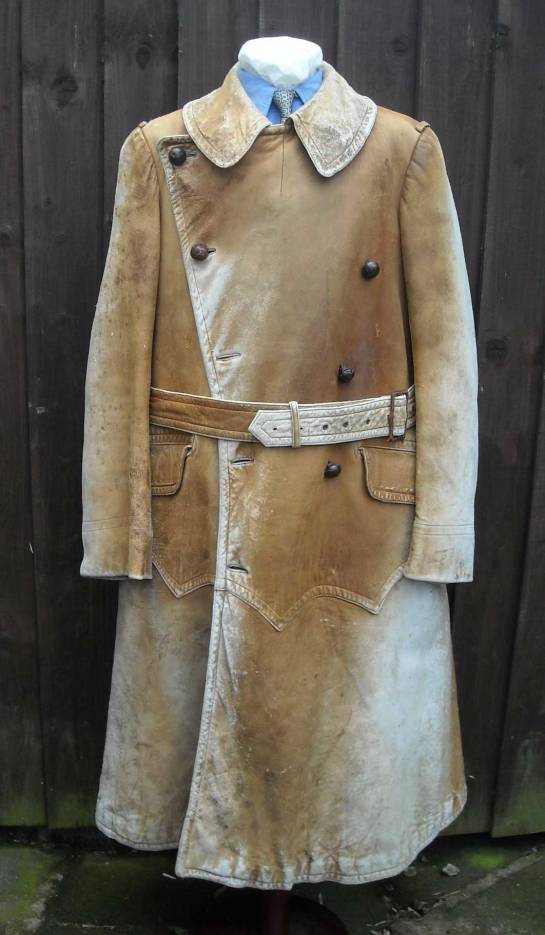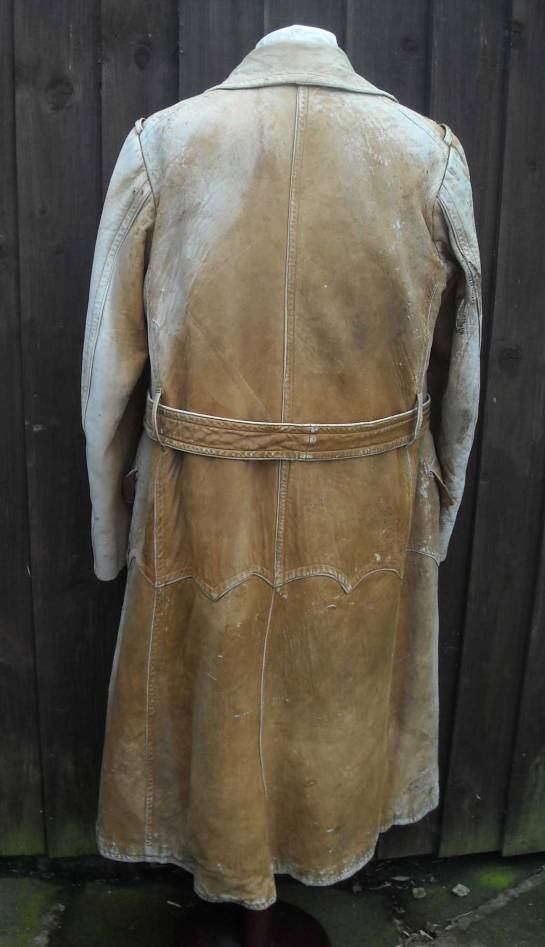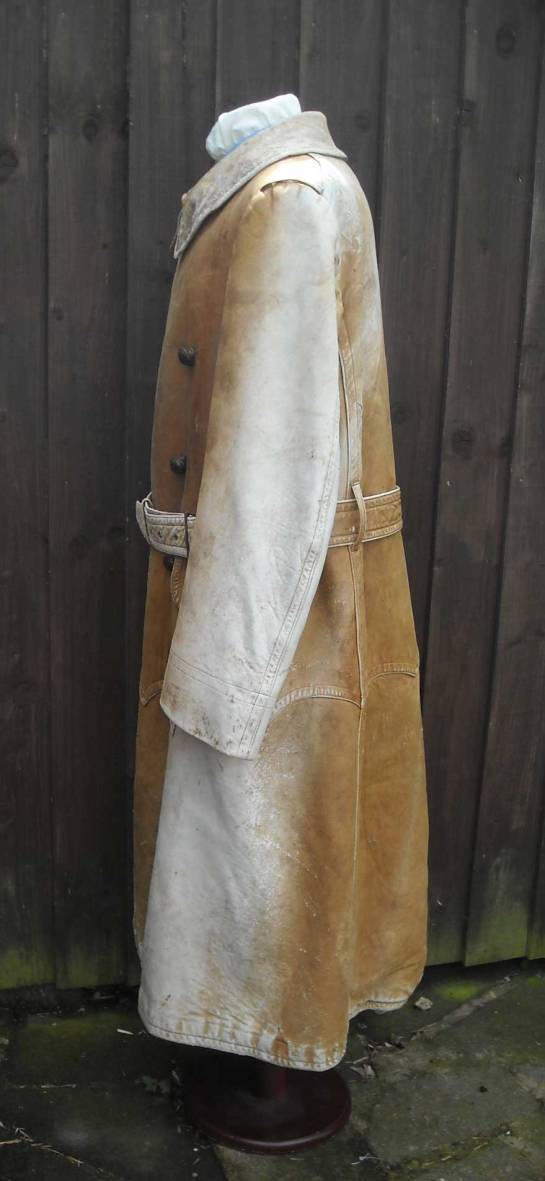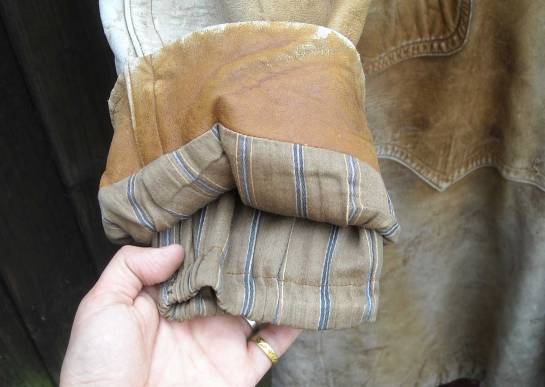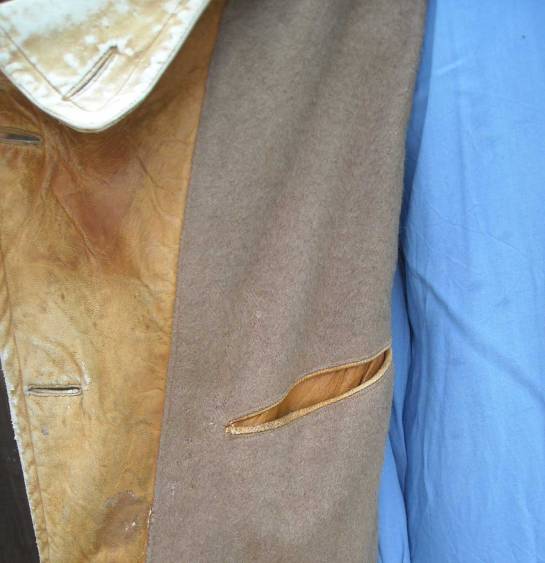Very often with vintage clothing, you have to make compromises based on what’s available. I’ve become more and more sick and tired of finding work jackets with close, but not quite perfect (subjective, obviously), features. So, I decided to make one. This is first off the Kurtz production line, so the top stitching is a bit wonky and variable. Let’s just imagine I based it on the production line and quality control standards of a WWII era factory. 😉 What I really like about vintage workwear is the attention to style that went into it. The fancy backs and pleats, the functional large patch pockets, and cuff detailing are all inspired by original pieces. A far cry from the modern shapeless polyester sacks that pass for workwear.
I bought a huge amount of heavy khaki drill cotton fabric to make my original creations, in preparation and practice for when I begin to work with more interesting or rare materials. Not that the correct colour and weight of cotton drill was easy to come by, but that’s a different story. The liner is cut from a remnant piece heavy wool I found in the bargain bin at MacCulloch and Wallis (just £2!), and the arms are lined in standard striped polished cotton arm lining material, again a feature commonly seen on (particularly French) vintage workwear jackets. The zipper is a late 1930s Talon, and the cinch buckles are of similar vintage.

















